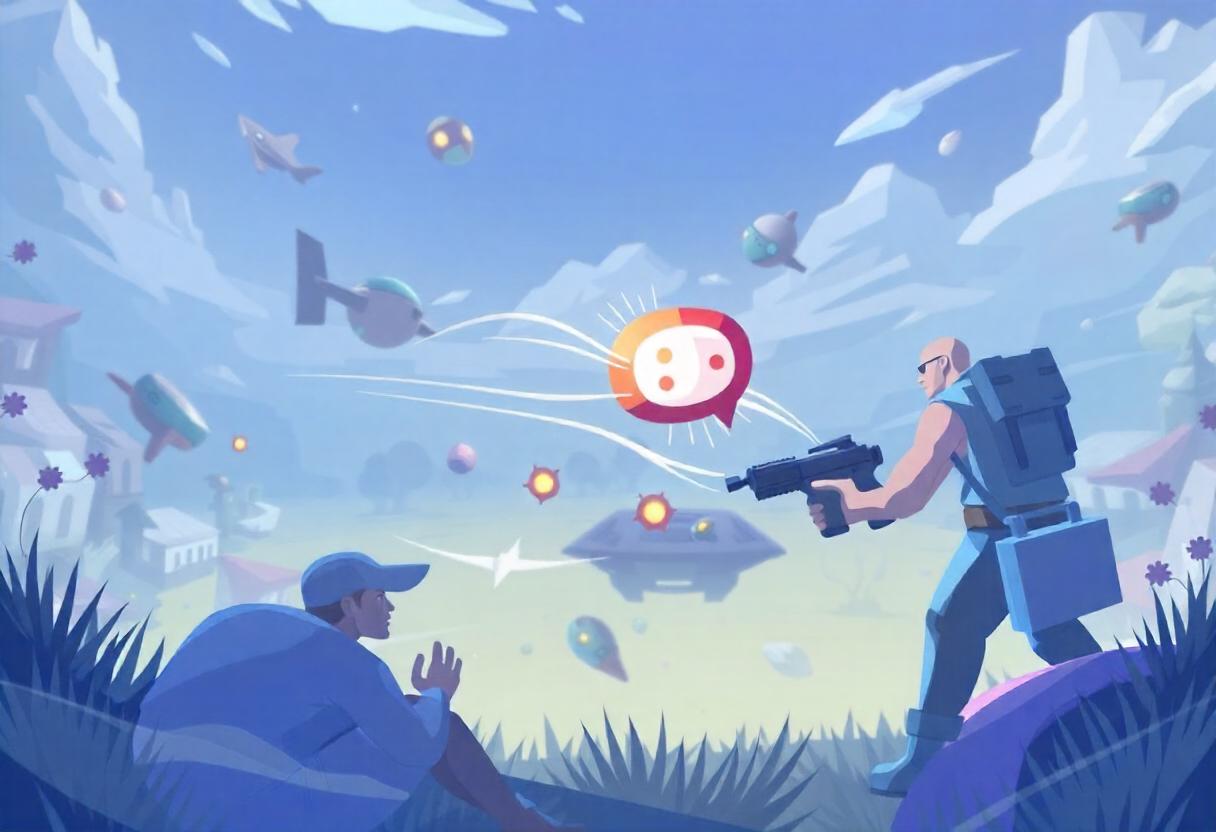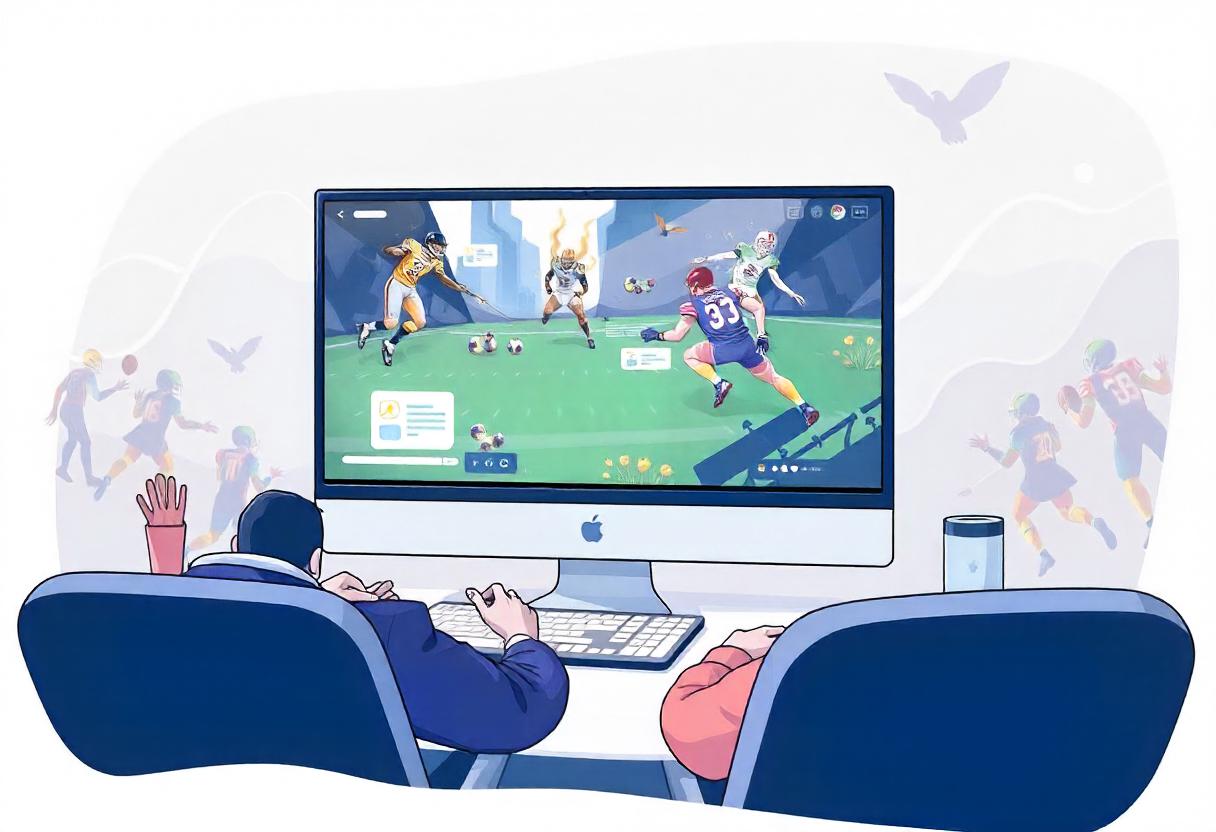Creating a great game is only the first step in a long journey. To complete it successfully, you need to reach your audience and turn your passion project into a profitable venture, which requires thoughtful marketing. Ads are a crucial part of this journey, helping you connect with the right players while maintaining a positive user experience.
Whether you're marketing a mobile, console, or PC game, incorporating ads in a way that feels natural is key. This is why this blog will act as a guide that will help you integrate ad services into your gaming marketing in ways that benefit both your players and you.
1. Crafting Effective Game Marketing Strategies
Before you implement integrating ads in games, it’s important to establish a clear game marketing strategy. This ensures that ads fit naturally into your broader promotional efforts. Think about your game type, target audience, and the way you plan to generate revenue.
Your strategy might include a mix of in-game ads, social media campaigns, influencer partnerships, and cross-promotion. Each of these can work together to increase visibility, attract new players, and boost revenue.

2. Integrating Ads in Games the Right Way
Seamlessly integrating ads into games means finding ways to include them without disrupting the gameplay. The goal is for players to interact with ads without feeling like their experience is being interrupted. Here’s how you can achieve that:
- Banner Ads: Non-intrusive ads that appear on certain screens, like menus or loading pages, without disrupting the action.
- Interstitial Ads: Full-screen ads that are shown during natural pauses in gameplay, like between levels or after completing a task.
- Rewarded Ads: These ads offer players in-game rewards—extra lives, bonuses, or items—for watching a video, making the experience feel like a benefit rather than an inconvenience.
This approach ensures that ads not only appear, but also contribute meaningfully to the player’s experience.
3. Optimising Mobile Game Advertising
Integrating ads in games requires special attention in mobile formats, where the gaming experience is often more immersive. Playable ads and native ads are two examples of formats that allow for a seamless transition between gameplay and advertising. When done right, integrating ads in games on mobile platforms can enhance the player experience while generating revenue without causing disruptions.
- Playable Ads: These give potential players a brief, interactive demo of the game, allowing them to experience gameplay before deciding to download. Playable ads tend to feel natural and engaging.
- Native Ads: Ads designed to blend in with the game environment, such as a billboard in a racing game or a branded item in an adventure game. Native ads are designed to match the look and feel of the game so they don’t stand out as traditional ads.
The key to successful mobile game advertising is ensuring the ads enhance the player experience, rather than disrupt it.
4. The Power of Influencer Marketing for Games
Collaborating with influencers can enhance the integration of ads in games. Influencers bring credibility and can promote your game in a way that feels authentic to their audience. By aligning influencer marketing with your ad strategy, you create a more dynamic and effective approach, reaching players through multiple channels.
To make the most of influencer partnerships, it's important to find influencers whose audience aligns with your game’s target demographic. Allowing them to promote your game in a way that feels natural to their content ensures authenticity, and their viewers will be more likely to trust and engage with your game.
5. Harnessing User-Generated Content
User-generated content (UGC) can be a powerful addition to your advertising strategy. Players who share their own gameplay, create fan art, or participate in in-game challenges are essentially promoting your game without traditional ads. Here's how UGC can tie into advertising:
- Encourage players to share gameplay clips or screenshots that naturally feature integrated ads.
- Create in-game events or community challenges that lead to content creation, such as custom levels or fan-made trailers.
UGC provides a way for players to engage with your game while promoting it organically, making it a win-win.
6. Social Media Marketing for Games
Social media is an essential tool for marketing games. Platforms like Facebook, Instagram, and TikTok allow you to reach a wide audience and integrate ad services directly into your campaigns. Use these platforms to run video ads, sponsored posts, or carousel ads that feel engaging and authentic to the platform’s style.
The more aligned your ads are with the interests and behaviors of social media users, the more effective they will be. Crafting ads that feel like they belong in the social feed—whether through humorous clips, engaging visuals, or influencer collaborations—can help maintain interest without the ads feeling out of place.
7. Using Paid Ads to Enhance Game Marketing
When you’re integrating ads in games, paid ads play a critical role in boosting visibility and driving new downloads. Platforms like Google Ads, Facebook Ads, and in-app ads all contribute to a well-rounded approach to integrating ads in games while ensuring you target the right audience. Focus on high-performing platforms:
- Google Ads for Games: Promotes your game across search engines, YouTube, and the Play Store, providing broad exposure.
- Facebook Ads: Target specific audiences based on interests, location, and behavior to ensure that your game is seen by the right players.
- In-App Ads: Reaching potential players through ads placed in other mobile apps can bring attention to your game.
By utilising these platforms wisely, you can ensure that paid ads support your broader marketing strategy.

8. Monetisation Techniques for Games
Integrating ads isn't just about promoting your game; it’s also about monetising effectively. Here are some techniques to consider:
- Freemium Model: Offer your game for free, then integrate ads as a way to generate revenue, with the option for players to pay for an ad-free experience.
- In-App Purchases with Ads: Combine in-app purchases with rewarded ads to keep players engaged while driving revenue.
- Cross-Promotion: Partner with other game developers to advertise each other’s games within your titles, creating a mutually beneficial relationship.
These approaches allow you to monetise effectively while keeping your audience engaged.
9. Engaging Players through Ads
Ads that actively engage players tend to feel less intrusive. Rewarded ads and interactive ad formats—such as playable demos or mini-games—can be more enjoyable for players and keep them engaged with your game. Make sure ads complement the gaming experience rather than interrupt it.
Consider using ads at natural points within the game, such as during breaks in gameplay or as part of a reward system. When players feel like they are gaining value from interacting with an ad, it becomes less of an inconvenience and more of an incentive.
10. Maximising ROI on Game Ads
To make the most of your ad efforts, focus on maximising your return on investment (ROI). Key strategies include:
- Tracking Performance: Continuously monitor how your ads are performing across different platforms and formats to identify what’s working.
- A/B Testing: Test different versions of your ads to see which resonate best with your audience.
- Focusing on Retention: Ads should not only attract players but also help retain them. Non-intrusive ads, rewarded ads, and engaging formats will help keep players coming back.
Conclusion
Integrating ad services into your game marketing doesn’t have to feel like a chore for players. By carefully considering where and how ads appear, you can create a seamless experience that benefits both your game’s visibility and your bottom line. Whether through social media campaigns, influencer partnerships, or in-game ad placements, each element should work together to enhance the player experience and drive your game's success.
At The Game Marketer, we specialise in helping game developers reach the right audience through targeted marketing strategies that drive engagement and revenue. With our expertise in game marketing, we work closely with developers to craft campaigns that fit seamlessly into the gaming experience, ensuring your game gets the attention it deserves.



